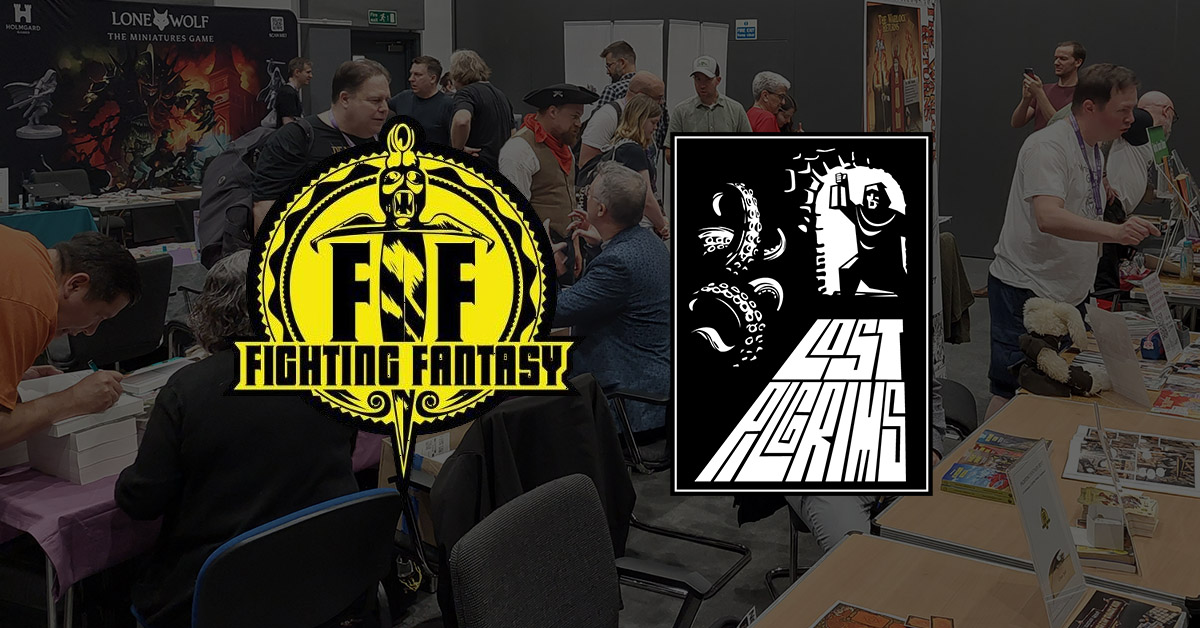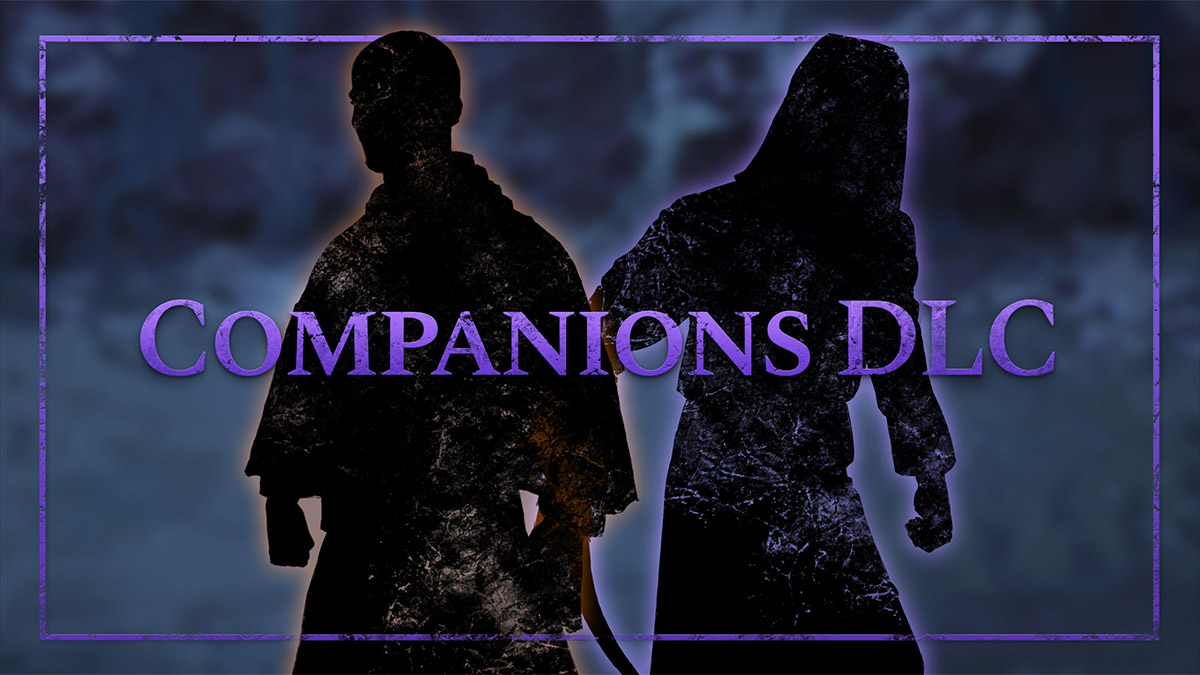
Well, one lost pilgrim to be precise. On 7th September, I was fortunate to have participated in Fighting Fantasy Fest 5 in the UK, representing Lost Pilgrims there in exhibiting the City of Thieves graphic novel I’ve been working on with Chameleon Comix’s founder Gyula Szűcs and mega-talented graphic artist Krisztián Balla. We met and chatted with a lot of enthusiastic Fighting Fantasy fans, encountered living legends, listened to intriguing talks, and saw a ton of cool stuff, including the new gamebook The Dungeon on Blood Island by Sir Ian Livingstone himself.


This week we’re getting down to brass tacks: our first upcoming DLC this year and the Companions therein. Development is coming along smoothly, and we thought we’d share the highlights by delving into some details – without giving much away this early.


The artbook of Vagrus is finally here (well, technically it is also on its way to everyone who ordered it) and holding it in our hands is indeed fantastic.
Admittedly, putting the book together was quite rough. Some of us thought that pulling it together from already existing artwork and writing texts around the art is going to take a couple of weeks. Turns out, compiling and writing something this big for physical publishing takes a handful of months, more like. All this in spite of doing a sort of a dry run previously with the smaller (A5) art booklet that went into the Collectors' Editions, albeit that had no texts accompanying the images.


Hey everyone,
we thought we would share with you a glimpse into character art work that has been coming along for a while now. You may have noticed that common enemies in-game (like certain outlaws or Orc warriors) have received new variants when it comes to looks and well, this is how it began - concepts and outlines and ideas that ended up reworked until we picked the three or four we thought would be best. We believe that these small but significant variations give a lot of diversity to the roster of your more common foes and we hope you feel the same! Have at them!


Commerce in the Riven Realms is held by the iron grip of Trading Houses through official monopolies or the control of locations that produce valuable goods. A simple merchant who deals in smaller quantities of wares can not begin to imagine what profit these factions work with, especially compared to what the actual manufacturing or harvesting costs. Yet there are considerable expenses involved in these operations, too. If the hardships of travel over the accursed wastelands were not enough by themselves, factions regularly wage bloody wars for resources, mostly in the shadows but often openly as well out on the frontier - and these are astonishingly expensive.


Hey everyone,
first of all, Happy New Year. We made it to 2021 at last.
It's been a while since we posted a devlog entry and we figured that this would be a great time to do so. Today's topic, Dynamic pricing, has been on our minds for a long-long time, and finally, we've decided to pull the trigger on implementing it. To provide a little background on why we need it, let's review what happens in the current build of the game when you go trading.



This, too, has come to pass: we entered Early Access with Vagrus on Steam and GOG.com over a week ago. It has been an emotional roller-coaster since, to say the least, and a very exciting experience altogether. In this post, we thought to give you our thoughts on the whole shebang and look into what comes next.


Ghouls are mysterious creatures whose origins you may be able to find out by playing Vagrus. They hunt at night, preying on beast and human alike, traveling great distances in packs. Their sickly, frail humanoid form hides terrifying strength and astonishing speed, which the Ghouls utilize to corner and eviscerate their victims. It is a common misconception to consider these creatures Undead because of their looks and name, they are far from it, falling into the category of mutants rather.


Crew Combat is the most common way you will handle violent conflicts as you roam the wastelands of the Riven Realms. We wanted to give you a rundown of the basic concepts here so that those interested might find some insights.
Disposition
Each Crew Combat encounter identifies the two sides as either the Attacker or the Defender. The player's comitatus can typically be the attacker when they raid small settlements or prey upon other travelers, while they are often found as the defender when getting accosted by monsters, outlaws, or worse.


Another crucial game mechanic that is being added to Vagrus as we are writing this is a system of Rumors. Rumors are short entries in your Journal that are meant to guide players to content and unlock locations on their Chart in order to help them plan journeys and find places. We have come to the conclusion during playtesting that not only do we need to differentiate these Rumor entries from your Objectives in the Journal but we also need to separate them entirely and move them to a different pane. As evident from this, Rumors have undergone quite a lot of change since their original conception.
